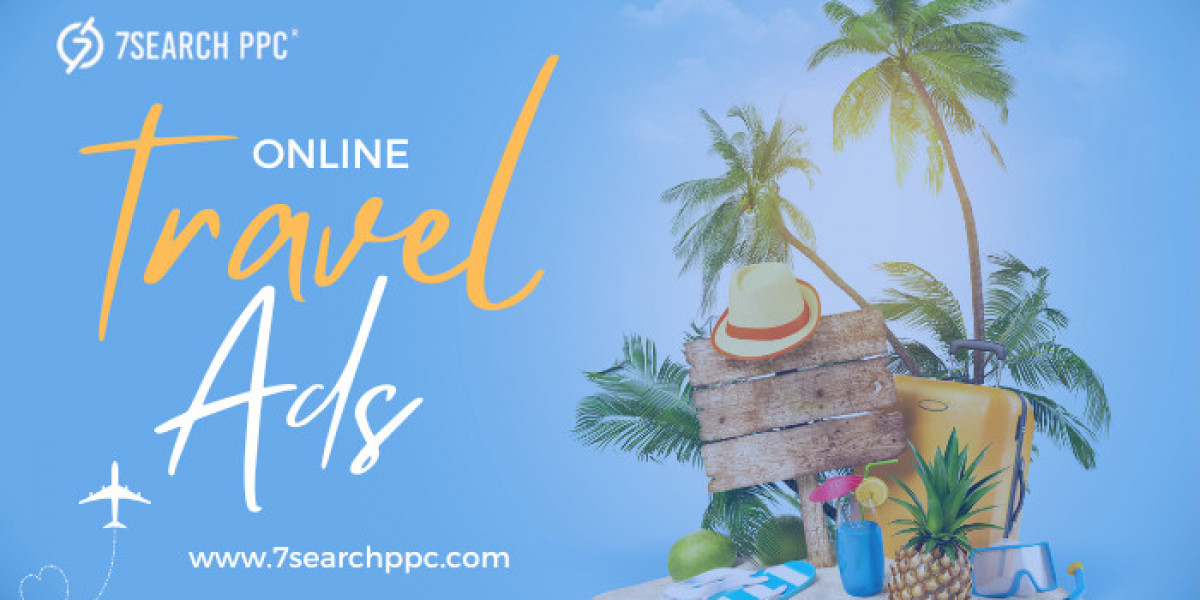In a competitive tourism landscape, crafting online travel ads that resonate with potential tourists and drive bookings is both an art and a science. Successful travel advertising goes beyond promoting destinations—it taps into emotions, showcases unique experiences, and inspires audiences to embark on adventures.
This article explores strategies for creating travel ads that captivate, engage, and ultimately lead to bookings. By following these best practices, travel businesses can build memorable advertising campaigns that stand out and inspire action.
Know Your Audience’s Desires and Motivations
Understanding what motivates your target audience is crucial to creating impactful travel ads. Travelers look for diverse experiences, ranging from luxury escapes and adventure trips to cultural immersion and wellness retreats. Identifying these desires helps shape your messaging and visuals to resonate with specific traveler profiles.
How to Define Your Audience:
- Segment based on travel motivations: adventure, relaxation, family trips, etc.
- Research demographics and psychographics to gain insights on age, interests, and lifestyle.
- Analyze data from previous campaigns to understand which ads performed best with different groups.
By aligning your advertising with the unique motivations of your audience, your ads will have a stronger impact, increasing the likelihood of bookings.
Create Compelling Visual Content
Travel advertising relies heavily on visuals that inspire wanderlust. High-quality images and videos allow viewers to envision themselves at a destination, making it a powerful tool for generating interest and engagement. Invest in professional photography and videography that highlights your location’s beauty and unique attractions.
Tips for Effective Visuals:
- Showcase unique landscapes and activities: Highlight scenic spots and local experiences that set your destination apart.
- Use storytelling in videos: Short narratives that feature people exploring the destination can create an emotional connection.
- Incorporate user-generated content (UGC): Encourage past visitors to share their photos and feature these in your ads for authenticity.
Well-crafted visuals not only attract attention but also help potential travelers visualize their dream vacations, motivating them to take the next step in their travel planning.
Leverage Social Media for Travel Advertising
Social media is a powerful platform for Tourism Marketing, allowing brands to reach diverse audiences and encourage engagement. Platforms like Instagram, Facebook, and TikTok offer unique opportunities for travel brands to connect with users through visually appealing content.
Social Media Strategies for Travel Ads:
- Use Instagram Stories and Reels: Showcase short clips of your destination’s highlights.
- Engage followers through comments and hashtags: Create a branded hashtag for user-generated content and interaction.
- Collaborate with influencers and travel bloggers: These partnerships can enhance credibility and reach targeted audiences.
By actively engaging with followers and consistently posting, you can foster a community around your brand and turn social media users into loyal customers.
Harness the Power of Storytelling
Travel ads that tell a story are more memorable and engaging than simple promotional messages. Storytelling evokes emotions, captures the essence of a place, and creates a sense of anticipation. Whether it’s a narrative of a traveler’s journey or a story about the culture and history of the destination, storytelling makes your ads compelling.
Effective Storytelling Techniques:
- Use real-life testimonials from travelers who have visited your destination.
- Create a narrative that follows a journey, from planning to experiencing the destination.
- Focus on the sensory details: Help your audience imagine the sights, sounds, and experiences they would have.
When an ad successfully tells a story, it can build a deeper emotional connection, making viewers more inclined to consider booking.
Personalize Your Ads with Data-Driven Targeting
Data-driven personalization allows you to tailor your ads to individual preferences, increasing the chances of engagement and conversions. By leveraging information like user location, browsing behavior, and past travel searches, you can create ads that speak directly to the user’s interests.
Personalization Tactics:
- Use retargeting ads for users who previously visited your website.
- Employ location-based targeting to promote seasonal attractions or local events.
- Segment email lists to send tailored travel offers to different demographics.
Personalized ads make potential travelers feel valued and understood, leading to higher engagement rates and a stronger likelihood of bookings.
Highlight Unique Experiences and Offer Value
In an era of experiential travel, ads that highlight unique experiences, such as local culture, culinary tours, or adventure activities, are highly effective. Instead of focusing solely on the destination, emphasize what travelers can do there and how it aligns with their interests.
Ways to Add Value in Ads:
- Showcase exclusive packages or itineraries that combine popular attractions with lesser-known spots.
- Offer early booking discounts or limited-time deals to encourage action.
- Promote local events or seasonal experiences that might appeal to specific groups of travelers.
By focusing on what makes a destination unique, your ads will capture the attention of tourists seeking distinctive and memorable experiences.
Use Emotional Appeals to Inspire Adventure
Successful travel ads appeal to emotions, from the excitement of adventure to the relaxation of a serene beach getaway. Ads that evoke feelings of joy, excitement, or nostalgia create a connection with the viewer, inspiring them to book a trip.
Types of Emotional Appeals:
- Adventure and discovery: Highlight thrilling experiences like hiking, water sports, or wildlife encounters.
- Relaxation and tranquility: Showcase peaceful landscapes, luxury resorts, and wellness experiences.
- Cultural immersion: Emphasize unique traditions, festivals, and local interactions.
Emotional appeals make your ads memorable and inspiring, prompting viewers to envision themselves at the destination and take action.
Optimize Ads for Mobile Devices
With most people planning trips on their smartphones, optimizing travel ads for mobile devices is crucial. Mobile-friendly ads and websites ensure a smooth user experience, making it easier for travelers to explore your offerings and book.
Mobile Optimization Tips:
- Use vertical videos and mobile-responsive layouts for ads on social platforms.
- Ensure fast loading speeds to reduce bounce rates.
- Incorporate click-to-call options or easy booking buttons for seamless navigation.
A mobile-optimized experience boosts engagement and conversions, especially among younger audiences who prefer using smartphones for travel planning.
Leverage Video Content to Drive Engagement
Video is a highly effective medium in travel advertising, offering a dynamic way to showcase destinations, experiences, and traveler testimonials. Short video ads on platforms like YouTube, Instagram, and Facebook allow brands to create an immersive experience that engages viewers.
Creating High-Impact Travel Videos:
- Feature a mix of scenic shots and activities to give a holistic view of the destination.
- Include testimonials from travelers sharing their experiences.
- Use short-form content for platforms like Instagram Stories and Reels to maintain viewer interest.
Videos not only capture attention but also allow audiences to experience a virtual “tour” of the destination, making them more likely to book.
Include Clear Calls-to-Action (CTAs)
Effective travel ads should always end with a clear and compelling call-to-action (CTA) that guides potential travelers toward booking. Whether it’s “Book Now,” “Explore Packages,” or “Learn More,” a strong CTA prompts action and increases conversions.
Best Practices for CTAs:
- Make CTAs action-oriented to encourage immediate engagement.
- Place CTAs strategically within your ad for visibility.
- Offer incentives, such as discounts for early bookings, to create urgency.
A well-placed CTA can make all the difference in turning a curious viewer into a confirmed booking.
Conclusion
Creating high-impact travel ads requires a strategic blend of storytelling, personalization, and visual appeal. By understanding your audience, leveraging social media, and highlighting unique experiences, travel brands can create ads that inspire adventure and drive bookings.
In a digital world saturated with content, these tips can help your travel ads stand out, resonate with viewers, and transform interest into action.
Frequently Asked Questions(FAQs)
What are the most effective platforms for travel advertising?
Ans. Social media platforms like Instagram, Facebook, and TikTok are highly effective for travel ads due to their visual nature and large user bases. Search engines like Google are also crucial for targeting users actively seeking travel information.
How can small travel businesses create impactful ads?
Ans. Small businesses can leverage targeted social media ads, work with local influencers, and use user-generated content to build credibility and reach without a large budget.
Why is video content important in travel advertising?
Ans. Video content is engaging and allows viewers to experience a destination virtually, making it easier for them to envision their own travel plans and increasing the likelihood of bookings.
How does personalization benefit travel ads?
Ans. Personalization helps deliver ads that align with user interests, increasing relevance and engagement. Targeted ads based on browsing behavior or location can lead to higher conversion rates.
What makes a good call-to-action in a travel ad?
Ans. A strong CTA is action-oriented, concise, and encourages immediate action. Examples include “Book Now” or “Explore Offers.” Urgent language and incentives can further motivate users to take the next step.








